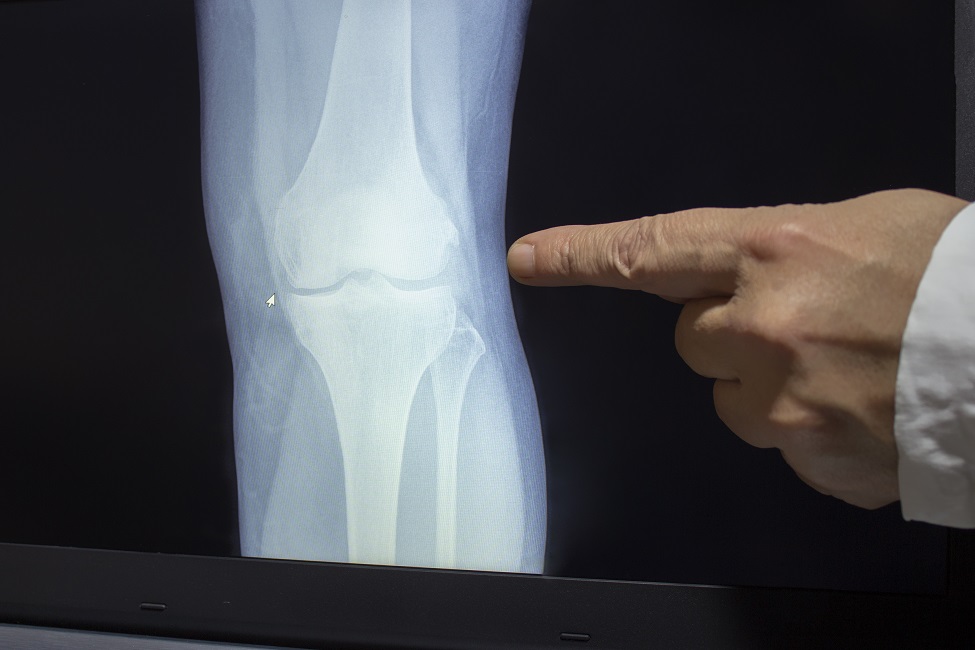Study First to Examine Osteoarthritis and Risk of Death

Researchers identified subgroups of people with osteoarthritis (OA) who might be at higher risk of mortality. The study cohort also included 2,589 participants who had knee X-rays (radiographic knee OA).
Osteoarthritis (OA) is the most common joint disease affecting about 30 million Americans. Over the course of a lifetime, the risk for developing OA is between 25 to 40 percent and obese people are at higher risk of developing this condition. Despite its widespread prevalence, the association of OA with increased death remains unclear.
Research on the subject has yet to produce conclusive results and most studies have only used small sample sizes resulting in limited generalizability. OA is a complex and diverse condition with several characteristics affecting its manifestation and prognosis.
Researchers from Florida Atlantic University and collaborators from The University of Iowa and Florida International University are the first to examine the differences in the risk of death associated with OA in participants with certain characteristics such as age, gender, ethnicity, body mass index, physical activity and smoking.
The study, published in the International Journal of Epidemiology, involved 51,938 Americans – a cohort representative of the United States population – who were followed for up to 20 years. The researchers examined the association between OA and the risk of all cause-specific mortality such as cancer, diabetes and cardiovascular disease. They also identified subgroups of people with OA who might be at higher risk of mortality. In addition, the study cohort included 2,589 participants who had knee X-rays (radiographic knee OA). Radiographic knee OA is a diagnosis based on the non-weight-bearing anteroposterior (front-to-back) knee X-ray. Radiographs often are scored for severity of degeneration of cartilage at the joints.
Results from the study show no association between death and self-reported OA in the study participants. On the other hand, radiographic knee OA was associated with risk of death from cardiovascular disease, diabetes, and renal (kidney) disease, but a decreased risk of death from cancer. Participants who had been diagnosed with radiographic knee OA before the age of 40 and participants who were obese with radiographic knee OA had a worse prognosis. Participants with radiographic knee OA diagnosed before the age of 40 had a higher risk from all causes and from diabetes. Obese participants with radiographic knee OA were at an increased risk of mortality from cardiovascular disease and diabetes. Self-reported OA and radiographic knee OA prevalence were 6.6 percent and 40 percent respectively.
“We were surprised to find that radiographic knee osteoarthritis was associated with a lower risk of cancer mortality,” said JuYoung Park, Ph.D., co-author and an associate professor in the Phyllis and Harvey Sandler School of Social Work within FAU’s College for Design and Social Inquiry. “Our findings contradict previous studies that reported either a positive relationship or no association between radiographic knee osteoarthritis and death from cancer.”
The exact reason for the negative association between radiographic knee OA and cancer is unclear to the researchers. They suspect that it might be due to a higher use of non-steroidal anti-inflammatory drugs (NSAIDs) in participants with radiographic knee OA. NSAIDs including aspirin have been widely reported to lower the incidence and mortality from cancers including breast cancer and colorectal cancer. However, the mechanism behind this protective association is not completely understood. The researchers speculate that NSAIDs use might also explain in part the higher risk of mortality from kidney disease observed in participants with radiographic knee OA.
“Because radiographic knee osteoarthritis is associated with an increased risk of death from cardiovascular disease, diabetes and renal diseases, managing these patients should include the prevention and treatment of these conditions,” said Park. “For people with radiographic knee osteoarthritis, regardless of how well they have managed their symptoms, it is recommended that they consult with their physician to discuss what they can do to reduce their risks. If they have already been diagnosed with cardiovascular disease, diabetes or renal diseases, they should learn how to manage the disease in order to prevent risk of early death. People who think that they may have osteoarthritis in a knee should see a rheumatologist to determine exactly what is going on with the knee.”
The study shows that compared with subjects with no arthritis, those who reported OA or had radiographic knee OA were more likely to be older, to be women, to be non-Hispanic White, to have a higher socioeconomic status, to have smoked in the past and to be less active. Compared to subjects with other arthritis, those with self-reported OA were more likely to be older, to be women, to be non-Hispanic White, to have a lower socioeconomic status, to be overweight and to be non-smokers. The median age of the participants who reported OA was 70 years old vs. 68 years old in those who reported not having OA.
Researchers used data from the National Health and Nutrition Examination Surveys (NHANES) conducted from 1988 to 1994 and from 1999 to 2010 by the National Center for Health Statistics of the Centers for Disease Control and Prevention.
OA is characterized by a loss of cartilage. Although the condition affects all joints due to its systemic nature, the joints that present most symptoms are the spine, the hands, the hips, the knees and the feet, causing significant disability and great loss in quality-adjusted life years.
Study co-authors are Angelico Mendy, M.D., M.P.H., corresponding author, College of Public Health at The University of Iowa; and Edgar R. Viera, Ph.D., Department of Physical Therapy at FIU.
-FAU-
Tags: research | medicine | cdsi | faculty and staff